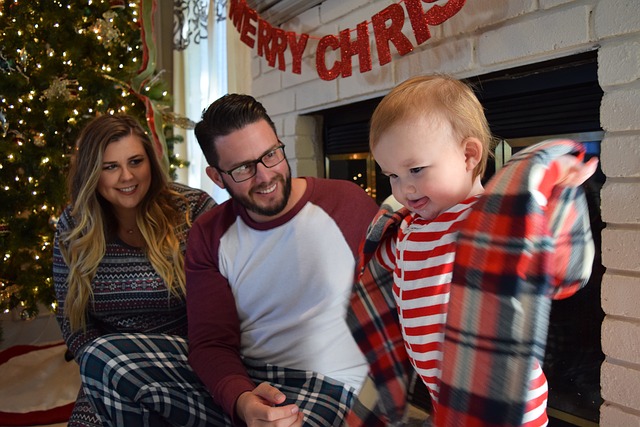The widespread use of masks during the COVID-19 pandemic has posed numerous nonverbal communication barriers, muffling speech and impeding lip-reading.
For deaf or hard-of-hearing (DHH) individuals, masks have made daily as well as clinical interactions especially difficult.
With approximately 72% of people older than 65 experiencing hearing loss, and with this age group having higher hospitalization rates compared to others, the increased availability of transparent masks may be particularly important in health care settings.
Research and Results
A team led by investigators from Brigham and Women’s Hospital and the Massachusetts Institute of Technology evaluated attitudes toward their newly engineered, transparent mask by surveying members of the general population and health care workers, including DHH health care workers.
They reported that 91% of DHH health care workers felt that communication would be easier with a transparent mask, with positive expectations from other health care workers and the general population as well.
The results of their surveys are published in JAMA Network Open.
“Transparent masks have the potential to address or overcome barriers of communication, especially within health care settings,” said corresponding author Giovanni Traverso, MB, BChir, PhD, of the Brigham’s Division of Gastroenterology and the Department of Mechanical Engineering at MIT. “It’s a simple message, but it’s important. Patient interactions are critical and there are measures we can take to improve them.”
When members of the general population and health care workers were shown a video of an individual smiling beneath an opaque N95 mask, only 20%-25% were able to identify the corresponding emotion as “happy.” This number increased to roughly 78%-88% percent of respondents when the model wore a transparent N95 mask.

Social Smiles
This research seems to back up what we have suggested in the past: that masks hinder politeness by hiding social smiles. Social smiles involve the pulling up of the lip corners, but the muscle around the eye generally does not activate.
Below you can see examples of a true smile (left) and a social smile (right).

Even though social smiles are not emotional expressions, they serve an important purpose in all of our daily interactions and communications. Social smiles serve several different purposes including:
- Serving as a note of politeness or courtesy or greeting
- Telling you something about the person who is smiling
- Commenting on things that we say or other emotions that we show
Transparent Face Masks Key?
Among clinicians, nearly 2/3 of general health care workers and 82% of DHH health care workers felt positively about wearing a transparent mask to communicate with patients, with roughly the same proportions, respectively, stating that opaque masks worsened communication with patients. The 123 general health care workers who responded to the survey were employees of Mass General Brigham and the 45 DHH respondents were affiliates of the the Association of Medical Professionals with Hearing Losses.
To evaluate perspectives on transparent masks within the general population, the researchers polled 1,000 U.S. adults representative of the national population using the online, opt-in survey provider, YouGov. 45% percent of these respondents reported feeling positively about interacting with a health care worker wearing a transparent mask and 36.6% felt neutrally.
Studies with greater sample sizes, including health care workers from multiple systems, are necessary to validate this study’s results. Future investigations can also evaluate respondents’ abilities to detect a range of different emotions.
The study’s authors hope that their results will demonstrate the utility of transparent masks, especially for DHH individuals.
The authors are part of a larger team of Mass General Brigham and MIT researchers who have engineered a transparent, reusable mask called the TEAL Respirator, which they are working to deploy in hospitals through the efforts of Teal Bio.
“Our lab works to develop products that can help people on the ground,” Traverso said. “We’re working hard to make and improve these masks so that they can be available for our hospital workers, and hopefully the general population as well.”
In the meantime…
It’s clear that social smiles are important for every day interaction. Without the ability to see them and until the widespread use of transparent masks (particularly in healthcare), we may have to take some extra steps to compensate.
Here are some helpful tips we suggest when wearing a mask:
- Nod when you see someone
- Wave “hello” and using other gestures to communicate
- Saying “hi” in a pleasant voice
The post Transparent Masks May Improve Nonverbal Communication first appeared on Humintell.
 Did you know that 88% of Americans feel the holiday season is the most stressful time of the year?
Did you know that 88% of Americans feel the holiday season is the most stressful time of the year? No matter how many times we have experienced children’s meltdowns, relatives’ faux pas, burned food or canceled flights, we seem to have unwaveringly high expectations for the holidays.
No matter how many times we have experienced children’s meltdowns, relatives’ faux pas, burned food or canceled flights, we seem to have unwaveringly high expectations for the holidays.  It’s easy to get overwhelmed with all the things we should do during the holidays.
It’s easy to get overwhelmed with all the things we should do during the holidays. Kecmanovic explains that one of the most pernicious effects of picture-perfect holidays portrayed in movies, ads and media is an expectation for smiling, joy and happiness, all the time. Although these feelings are common during this season, so are grief, sadness and other negative emotions.
Kecmanovic explains that one of the most pernicious effects of picture-perfect holidays portrayed in movies, ads and media is an expectation for smiling, joy and happiness, all the time. Although these feelings are common during this season, so are grief, sadness and other negative emotions. Research suggests
Research suggests Have you ever conducted an interview and were unsure if the individual was being 100% honest? If so, then this article is for you!
Have you ever conducted an interview and were unsure if the individual was being 100% honest? If so, then this article is for you! According to the Society of Human Resource managers, 53% of people lie on their resume. So, that means more than half of the people you interview will have inaccurate information on their resume/application.
According to the Society of Human Resource managers, 53% of people lie on their resume. So, that means more than half of the people you interview will have inaccurate information on their resume/application. You can do this by placing a ‘DO NOT DISTURB’ sign on the door, turning off your mobile phone, asking them to turn their phone off and/or unplugging any landline phones in the interviewing area.
You can do this by placing a ‘DO NOT DISTURB’ sign on the door, turning off your mobile phone, asking them to turn their phone off and/or unplugging any landline phones in the interviewing area. You should be doing 20% of the talking as they should be doing 80% of the talking, which can be accomplished by asking open ended questions.
You should be doing 20% of the talking as they should be doing 80% of the talking, which can be accomplished by asking open ended questions. An honest person will usually speak with confidence and in a timely manner to the question being asked. Using the example above, an honest person after hearing the question “Tell me about a time you were terminated by one of your previous employers.” will quickly reply; “I’ve never been terminated!” if they in fact have not been.
An honest person will usually speak with confidence and in a timely manner to the question being asked. Using the example above, an honest person after hearing the question “Tell me about a time you were terminated by one of your previous employers.” will quickly reply; “I’ve never been terminated!” if they in fact have not been. Please keep in mind when reading body language, the markers or ‘tells’ mentioned below must
Please keep in mind when reading body language, the markers or ‘tells’ mentioned below must 